This Japanese eggplant recipe saves me when I need dinner fast but want something that tastes special. After years of fighting with regular eggplant that came out bitter or mushy, I tried Japanese Eggplant Recipe and everything changed. These skinny purple vegetables cook in half the time, never need salting, and Max actually eats them without complaining.
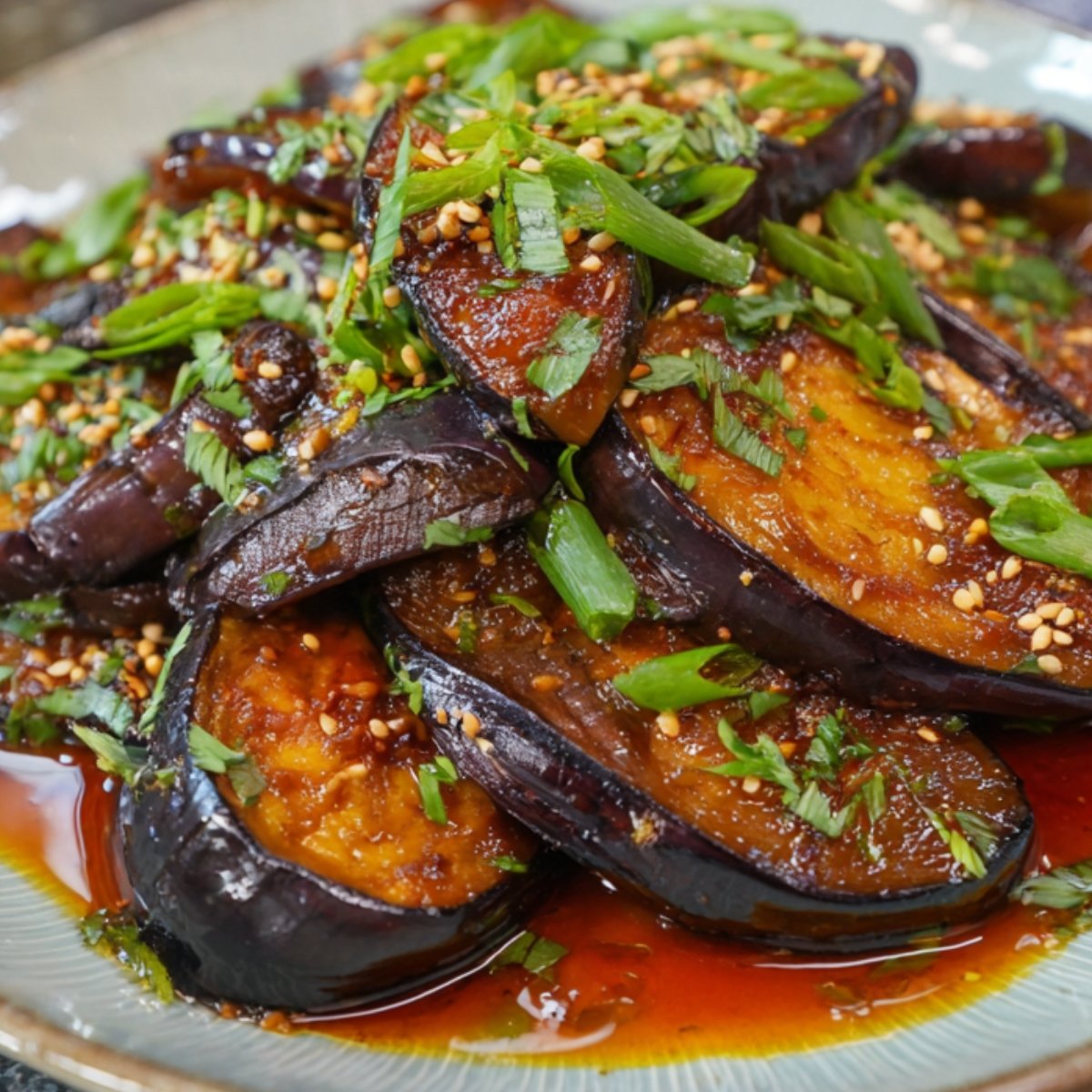
Why You'll Love This Japanese Eggplant Recipe
These Japanese Eggplant Recipe don't fight back like regular ones. No salting, no draining, no waiting around. You slice them up and they're ready to cook. They take maybe twenty minutes start to finish, and they taste like you actually know what you're doing in the kitchen. Max eats them without making faces, which doesn't happen with most vegetables I put on his plate.
The thing about Japanese Eggplant Recipe is they're built for busy people. They cook fast, they don't get bitter, and they make any sauce taste better. When my neighbors smell these cooking, they start asking what I'm making. I tell them it's jus
Jump to:
- Why You'll Love This Japanese Eggplant Recipe
- What You Need for Japanese Eggplant Recipe
- How To Make Japanese Eggplant Recipe Step By Step
- Smart Swaps for Japanese Eggplant Recipe
- Tasty Twists on Japanese Eggplant
- Equipment For Japanese Eggplant Recipe
- Storing Your Japanese Eggplant Recipe
- Perfect Pairings for Japanese Eggplant Recipe
- Top Tip
- How My Sister's Dish Became a Family Favorite
- FAQ
- Time to Cook Something Amazing!
- Related
- Pairing
- Japanese Eggplant Recipe
What You Need for Japanese Eggplant Recipe
The Eggplant:
- Japanese eggplants
- Vegetable oil
- Salt and pepper
Basic Seasonings:
- Soy sauce
- Rice vinegar
- Garlic cloves
- Fresh ginger
Finishing Touches:
- Sesame oil
- Green onions
- Sesame seeds
- Red pepper flakes
Optional Extras:
- Miso paste for glazing
- Honey for sweetness
- Cilantro for freshness
Simple Tools:
- Large skillet or wok
- Sharp knife
- Cutting board
See recipe card for quantities.
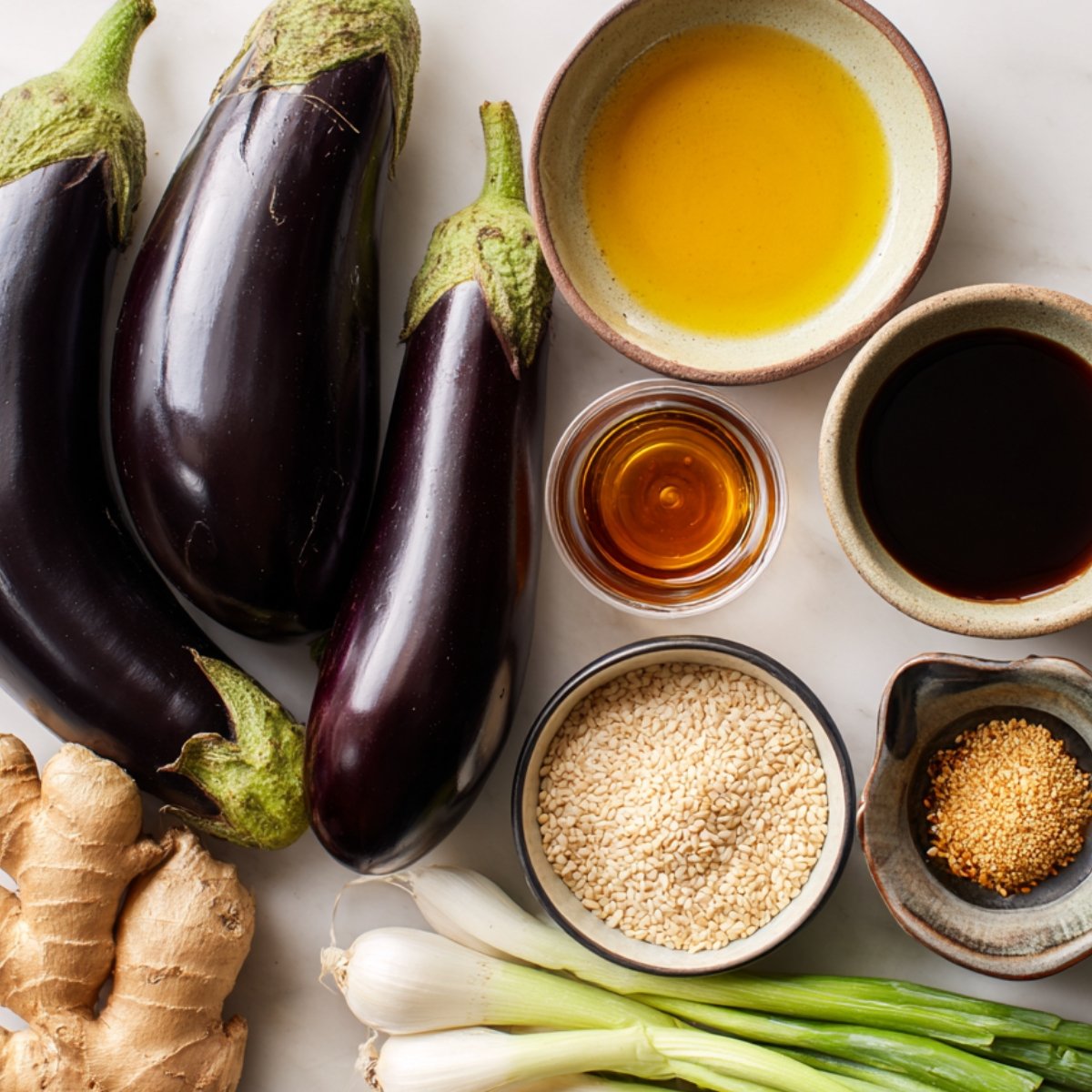
How To Make Japanese Eggplant Recipe Step By Step
Get Ready:
- Slice eggplants diagonally into thick pieces
- Heat oil in large skillet over medium-high heat
- Mince garlic and ginger while pan heats
- Mix soy sauce and rice vinegar in small bowl
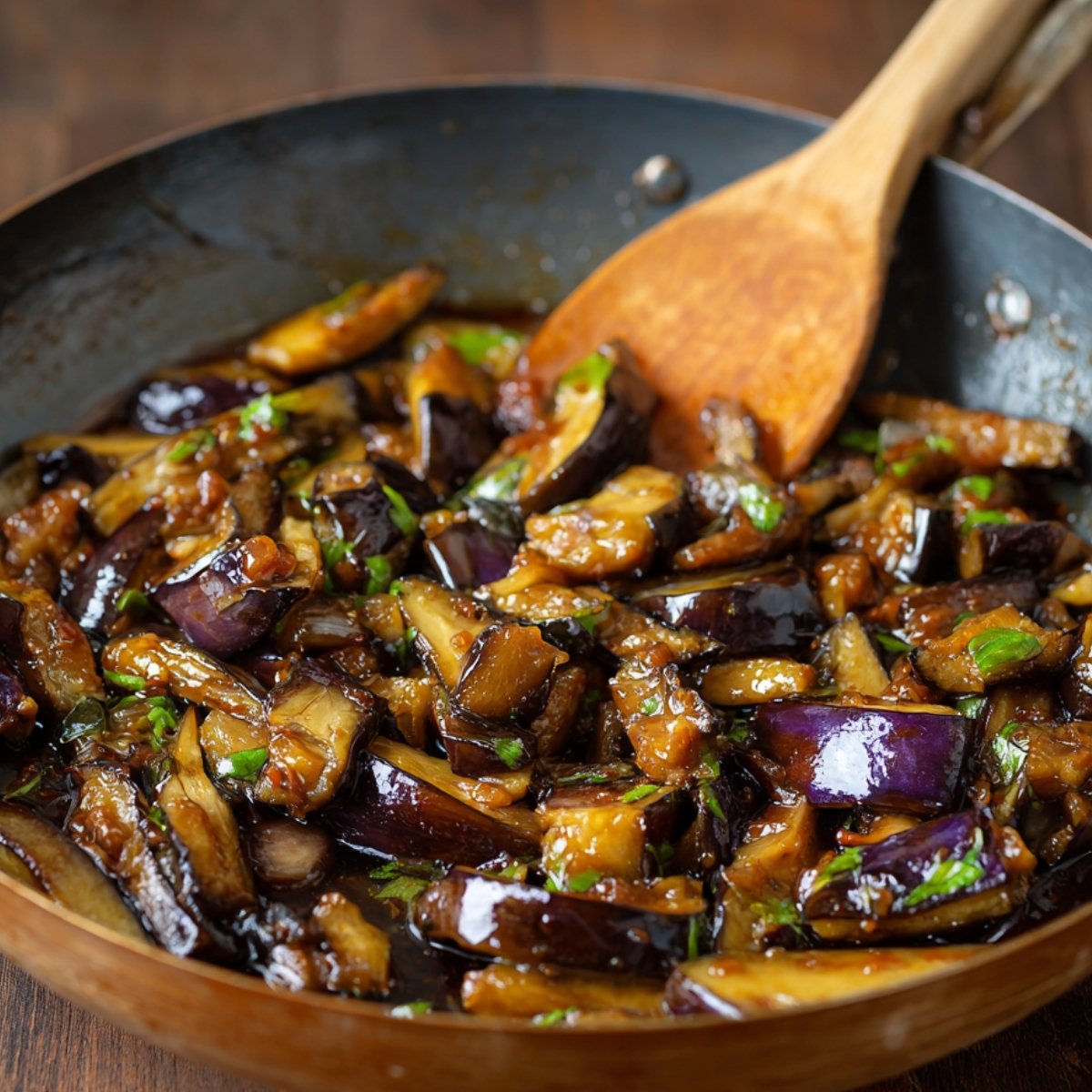
Cook the Eggplant:
- Add eggplant slices to hot oil
- Don't move them around too much
- Cook about 4 minutes until golden brown
- Flip and cook another 3-4 minutes
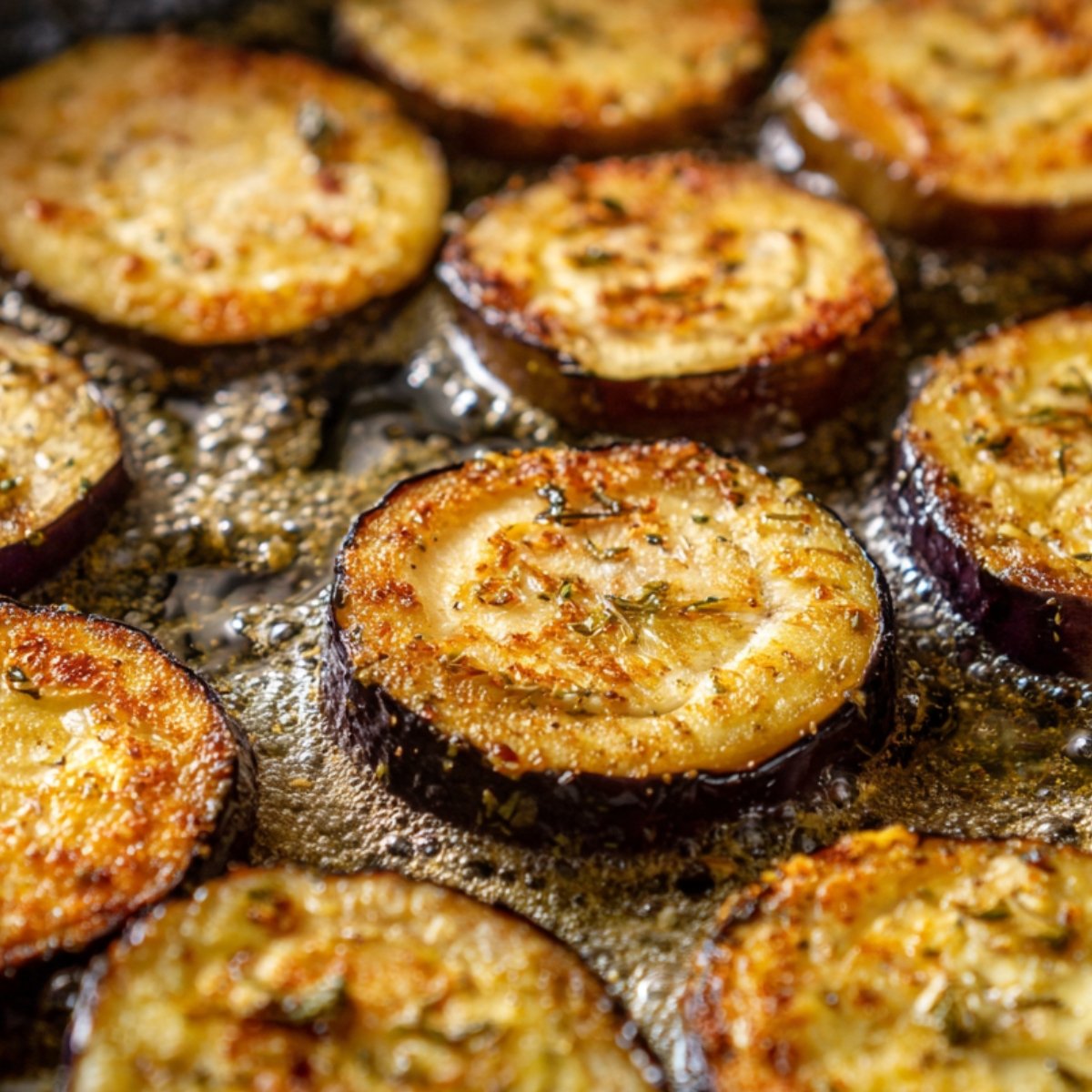
Add Flavor:
- Push eggplant to one side of pan
- Add garlic and ginger to empty space
- Stir for 30 seconds until fragrant
- Pour sauce mixture over everything
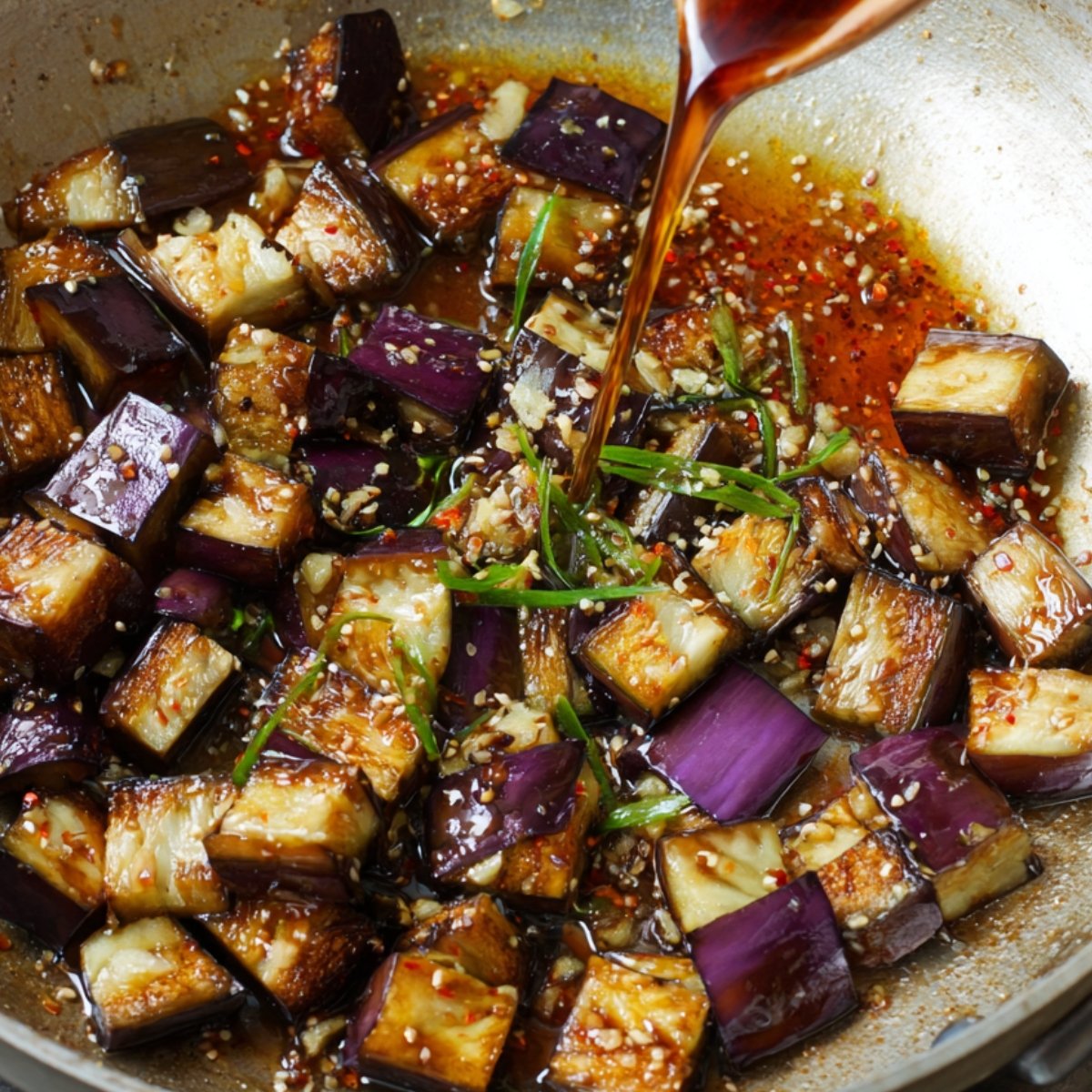
Finish Up:
- Toss everything together for 1 minute
- Drizzle with sesame oil
- Top with green onions and sesame seeds
- Taste and add salt if needed
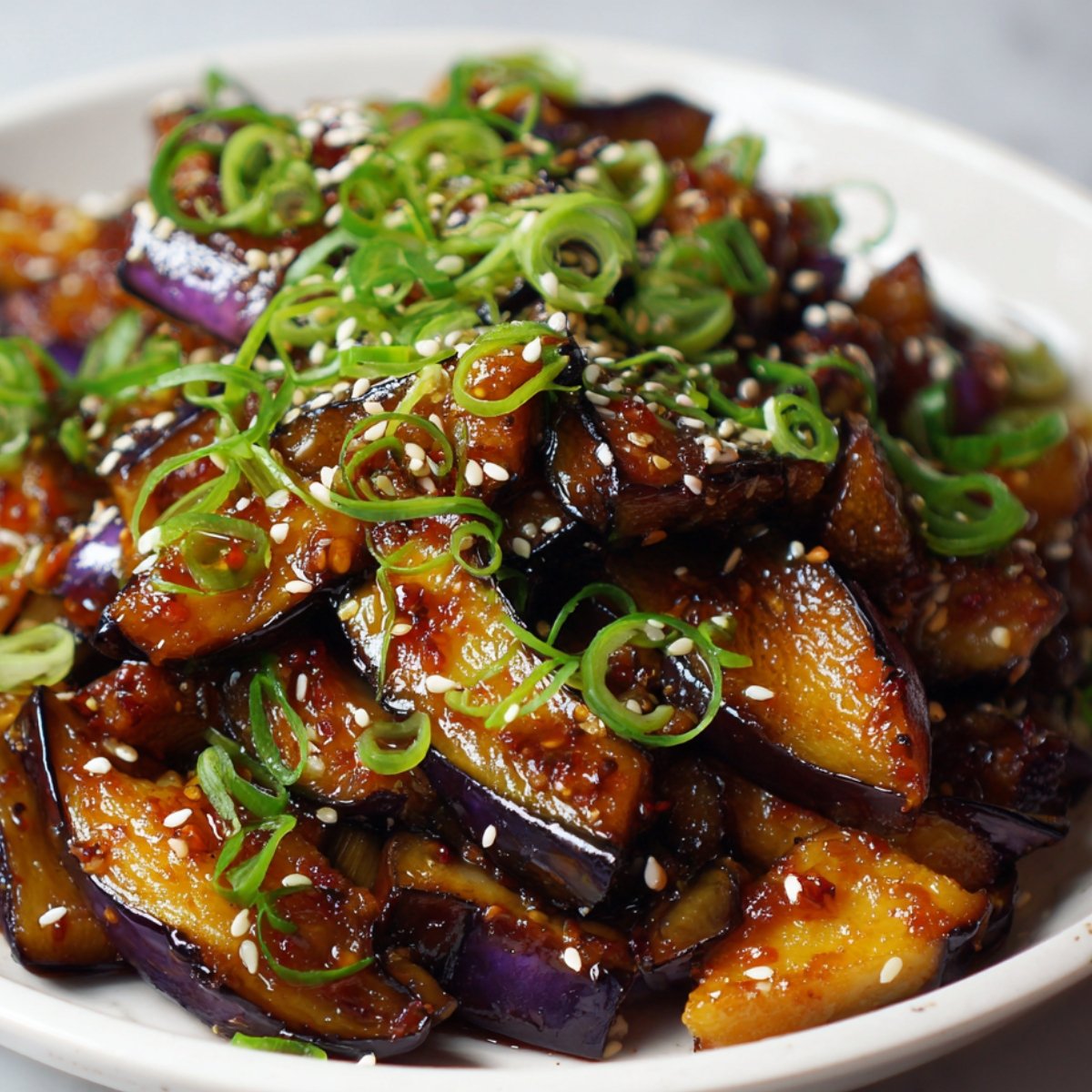
Smart Swaps for Japanese Eggplant Recipe
Eggplant Alternatives:
- Chinese eggplant → Similar size and texture
- Baby eggplants → Cut in half instead of slicing
- Regular eggplant → Salt first, takes longer to cook
Sauce Swaps:
- Soy sauce → Tamari for gluten-free
- Rice vinegar → White vinegar works fine
- Fresh ginger → Ground ginger (use less)
- Sesame oil → Any neutral oil
Heat Options:
- Red pepper flakes → Fresh chili slices
- No heat → Skip the spicy stuff entirely
- More heat → Add sriracha at the end
Finishing Touches:
- Green onions → Regular onions or chives
- Sesame seeds → Crushed peanuts
- Fresh herbs → Whatever you have growing
Tasty Twists on Japanese Eggplant
Miso Glazed:
- Add miso paste to the sauce
- Brush on during last minute of cooking
- Gets caramelized and sweet
- Max's favorite version
Spicy Kick:
- Double the red pepper flakes
- Add fresh sliced chilies
- Finish with hot sauce
- For people who like heat
Sweet and Sour:
- Add honey to the sauce
- Extra rice vinegar for tang
- Pineapple chunks if you have them
- Tastes like takeout
Mediterranean Style:
- Olive oil instead of vegetable oil
- Fresh basil instead of green onions
- Balsamic vinegar instead of rice vinegar
- Cherry tomatoes at the end
Simple Salt and Pepper:
- Skip all the sauce stuff
- Just salt, pepper, and olive oil
- Let the eggplant taste shine through
- Sometimes simple is better
Equipment For Japanese Eggplant Recipe
- Large skillet or wok
- Sharp knife
- Cutting board
- Small mixing bowl for sauce
- Wooden spoon or spatula
Storing Your Japanese Eggplant Recipe
Immediate Serving (Best Option):
- Serve hot right from the pan
- Eggplant stays tender and flavorful
- Crispy edges don't get soggy
Short-Term Storage (2 days):
- Cool completely before refrigerating
- Store in covered container
- Reheat in skillet, not microwave
- Add splash of oil when reheating
Reheating Tips:
- Use medium heat, not high
- Stir gently to warm through
- Don't expect it to be as good as fresh
- Add fresh green onions after heating
What Doesn't Work:
- Freezing makes the texture mushy
- Microwave turns it to mush
- Leaving it out too long makes it bitter
Perfect Pairings for Japanese Eggplant Recipe
Japanese eggplant works beautifully as part of balanced family meals where its mild flavor complements rather than competes with other dishes. Serve it over steamed rice with grilled chicken or salmon for a complete dinner, or add it to stir-fries alongside bell peppers, snap peas, and your favorite protein. The creamy texture pairs especially well with crunchy vegetables like carrots or water chestnuts, creating interesting contrast on the plate.
The beauty of Japanese eggplant lies in its ability to absorb and enhance whatever flavors you're already cooking with. If you're making teriyaki chicken, add sliced eggplant to the same pan during the last few minutes. Planning a Mediterranean meal? Roasted Japanese eggplant with olive oil, garlic, and herbs fits right in alongside grilled fish and a simple salad. Even breakfast works try it scrambled with eggs and served over toast for something different.
Top Tip
- Max found our twist to this Japanese eggplant recipe by pure accident last summer. He was "helping" me cook dinner, which mostly meant standing on his stool and poking at things. I had the eggplant slices browning in the pan when he reached for his juice box and knocked over the little dish of sesame seeds I had sitting on the counter.
- The seeds scattered everywhere, including right into the hot pan with the eggplant. I started to fish them out, but Max stopped me. "Leave them," he said. "They smell good now." He was right - they were toasting in the hot oil and smelled amazing. Now I always add the sesame seeds to the pan for the last minute of cooking instead of sprinkling them on at the end.
- The toasted seeds taste completely different from raw ones. They get nutty and crunchy and stick to the eggplant pieces. Max calls them "the crunchy bits" and always checks to make sure I didn't forget to add them. Sometimes the best cooking tips come from seven-year-olds who aren't afraid to mess up the plan.
How My Sister's Dish Became a Family Favorite
My sister never considered herself much of a cook until she moved to San Francisco and started sharing an apartment with a Japanese exchange student. One evening, her roommate offered to teach her how to make nasu dengaku, slicing Japanese eggplant lengthwise and scoring it in that traditional crosshatch pattern. She watched as the eggplant got brushed with oil, broiled until golden, then painted with a glossy miso glaze that caramelized under the heat.
She brought that dish to our next family gathering, worried it might be too "weird" for our fairly traditional Midwestern palates. But something magical happened when she set those golden, glossy eggplant halves on the table alongside the usual potluck fare. Even our pickiest eaters, including Max's cousins who normally won't touch vegetables, kept reaching for more. The sweet-savory glaze and creamy texture won everyone over. Now her miso eggplant is specifically requested at every family dinner, and she's become the unofficial vegetable expert.
FAQ
What do you do with Japanese eggplant?
Japanese eggplant works best in quick cooking methods like stir-frying, grilling, or roasting. Slice diagonally and cook in a hot pan with oil for 3-4 minutes per side. They're perfect for miso glazes, tempura, or simple garlic and soy sauce preparations.
Do Japanese eggplants need to be peeled?
No, never peel Japanese eggplants. Their thin, tender skin adds nutrition and flavor while becoming perfectly soft when cooked. Unlike regular eggplants with thick, sometimes tough skin, Japanese Eggplant Recipe skin practically melts during cooking and provides beautiful color to finished dishes.
How do you eat Japanese Eggplant Recipe?
Eat Japanese Eggplant Recipe just like any cooked vegetable - with chopsticks, fork, or fingers if grilled. The flesh becomes creamy and mild when cooked, with no bitterness. They're delicious over rice, in stir-fries, or as a side dish alongside grilled meats.
Do you have to salt Japanese eggplant before cooking?
Japanese eggplants rarely need salting because they're naturally mild and not bitter like regular eggplants. Skip the salt step unless you want firmer texture. Their delicate nature means they cook quickly and taste great without the time-consuming salting process that globe eggplants require.
Time to Cook Something Amazing!
Now you have everything you need to make Japanese eggplant recipe that actually tastes good. These slender purple vegetables aren't like regular eggplant they cook fast, taste mild, and Max actually asks for them. That's saying something for a kid who usually treats vegetables like they're poisonous.
Want more easy weeknight dinners? Try our Delicious Paris Hot chocolate Recipe that uses leftover rice and whatever vegetables you have on hand. Need something Max will definitely eat? Our Delicious Cornish Hen Recipe Baked pairs perfectly with these eggplants. When you want to feel fancy without the work, our Easy Alfredo Sauce Recipe takes five minutes and makes any meal feel more special.
Share your eggplant wins! We love seeing kids actually eat their vegetables.
Rate this recipe and join our cooking family!
Related
Looking for other recipes like this? Try these:
Pairing
These are my favorite dishes to serve with Japanese eggplant recipe

Japanese Eggplant Recipe
Ingredients
Equipment
Method
- Slice Japanese eggplants diagonally into thick pieces for even cooking.

- Heat vegetable oil in a large skillet over medium-high heat and prep sauce.

- Add eggplant slices and cook until golden brown on both sides, about 8 minutes.

- Add minced garlic, ginger, and pour soy-vinegar sauce over eggplant.

- Toss everything together, drizzle sesame oil, and garnish with seeds and green onions.














Leave a Reply